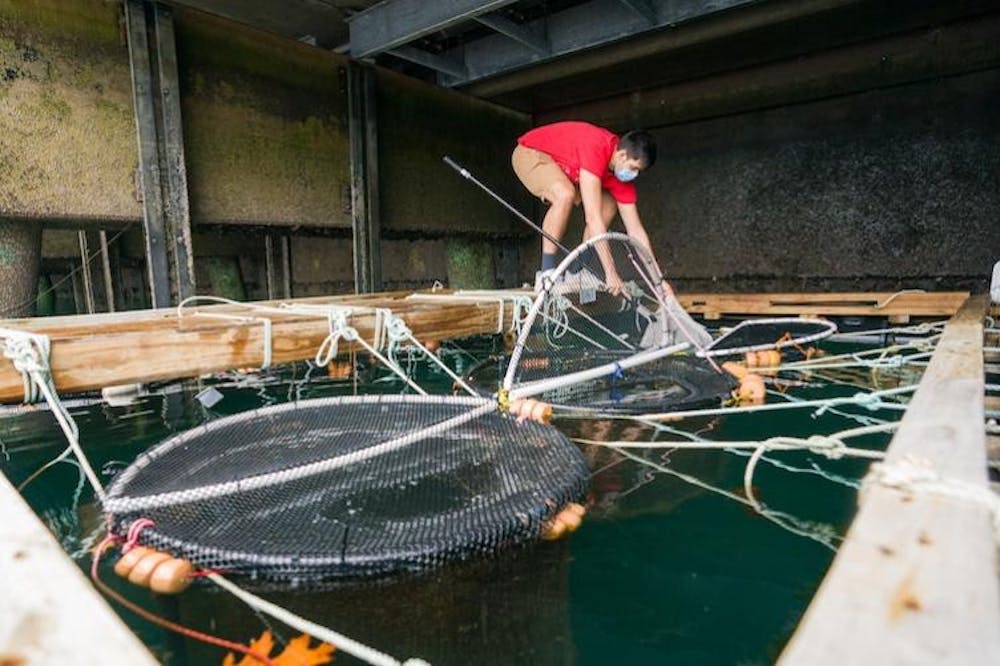When Nathaniel Spada started making videos on TikTok featuring lumpfish, he never expected them to go viral. He had been looking for good content to post in the hopes of gaining a following – "I didn't realize my greatest assets were swimming right in front of me," he said.
Spada is a graduate student in marine biology at the University of New Hampshire (UNH), who has found himself a viral content creator on the popular video-sharing app TikTok. He currently has 1.2 million followers, and 20.7 million total likes.
"I've always thought the lumpfish were cute, but I never imagined so many other people would fall in love with them too," Spada said.
His intent, he said, was to educate people about his research and what the life of a marine biologist looks like. "Going viral was quite surprising," he said.
His first video that went viral was posted last August, and Spada said that it "glued" him to his phone to watch all of the notifications pour in. "It was a pleasant surprise!"
The stars of Spada's videos, the lumpfish, are central to his graduate research. The focus of Spada's work is on improving lumpfish aquaculture, he said.
Lumpfish are raised by the millions in many Nordic countries and Canada, according to Spada, due to their usefulness in the process of farm-raising salmon. Salmon are often farm raised in sea pens, and being out in the water makes them prone to being infected with little parasites called sea lice. Lumpfish eat these sea lice, and as such are used by these fish farmers as a form of biological control to help keep the salmon healthy. The lumpfish are put into the salmon cages, Spada said, to eat the parasites off of the salmon.
But, even though millions of lumpfish are bred every year, "there isn't a single protocol that is drawn upon for raising this fish; everyone just does their own thing," Spada said. "So, I hope to find the proper nutritional and growing conditions for lumpfish so that the process of raising them is as cost effective as possible."
Spada became interested in lumpfish during the spring of 2019, his senior year. As an undergraduate, he was a member of the Sustainable Fisheries and Aquaculture Club on campus, and Dr. Elizabeth Fairchild came to speak to the club about her plans to raise lumpfish for experiments that year.
"I fell in love with the story that she told and the fish that she spoke so highly about," Spada said. As it was his senior year, he was looking for a professor with whom he could be a graduate student, and Fairchild seemed like "the perfect fit."
"After pestering her for a summer job, she gave me one," Spada said, and ever since, he has been working with lumpfish – now as Fairchild's Master's student.
Spada graduates from his program in September, but he still plans to keep making videos for his followers on TikTok. His research with the lumpfish will continue until the fall, and after that, he said he hopes to "find a job that has more viral-worthy content."
His goal is to keep his videos centered on marine biology, but expects that he will have to be creative with his content once he graduates. "I hope to continue to grow my brand as a content creator by making merchandise and posting videos to YouTube," Spada said. YouTube, he said, would be able to provide more in-depth content than TikTok, which has a 60-second limit on its videos.
Beyond his viral video plans, Spada hopes to find work at a federal or state agency like NOAA or Fish & Game. "It has been a dream of mine to work for NOAA so that is my main goal," he said.
"I love to educate folks on the things I'm passionate about," Spada said, "so I hope content creation remains in my future!"
Photo courtesy of Jeremy Gasowski.













